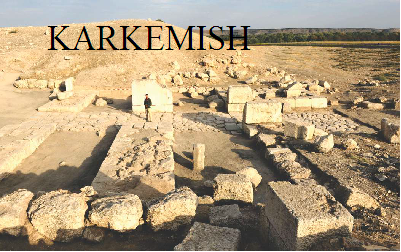KARKEMISH
 Author: STC
Author: STC
Article Date: 01.01.2016
The archaeological site of Karkemish, located in south-eastern Turkey on the border with Syria, has been inaccessible for a very long time. First, it had been turned into a military base and then it was mined. It has now again been the subject of archaeological research following a decision by the Cultural Authorities of the Turkish Republic in 2011.
Karkemish, an ancient city on the western bank of the Euphrates, has been inhabited since the Neolithic period. It was mentioned in the Bible in the story recounting the victorious battle fought in 605 BC by the Babylonians, led by Nebuchadnezzar II, against the armies of Assyria and Egypt.
The name Karkemish is a reference to Kamis, a god from northern Syria. Testimony of the wealth of the city can be seen in its stone monuments decorated with sculptures and inscriptions. The fortified bastions, the thriving trade on the Euphrates and the importance of the city as a stop-over point for trade caravans are first mentioned on cuneiform tablets discovered in Ebla dating back to three millennia before the birth of Christ.
An important trading centre for wood, Karkemish was conquered by the Emperor of the Hittites, Suppiluliuma I, who placed his son Piyassili in charge. The period of great splendour enjoyed by the city during the last two centuries of the Hittite Empire (the Late Bronze Age II) is not yet known.
Extending over an area of 90 hectares straddling the Turkish-Syrian border, Karkemish is so much more than a simple archaeological site - it is the city that has always had a place in the imagination of all those archaeologists that have worked, and are still working, in the Middle East. The digs were carried out between 1911 and 1914.
In 2011, after almost a century, digs were carried out again at Karkemish with a joint Turco-Italian expedition from the Universities of Bologna, Istanbul, and Gaziantep. Among the numerous finds at Karkemish, we only mention those from 2014. In the palace of the ruler Katuwa, who lived around 900 BC, some very rare carvings were found. Also inside the palace, a precious mosaic floor has been found.
The archaeological research project at Karkemish has revealed some important monuments of the Neo-Hittite city from the beginning of the first millennium B.C. and laid the foundations for further studies of remains dating back to the previous millennium.
The digs and research work carried out at Karkemish have led to the application of some techniques to prevent erosion, thanks also to support from Mapei, which has collaborated on the field for a number of years.